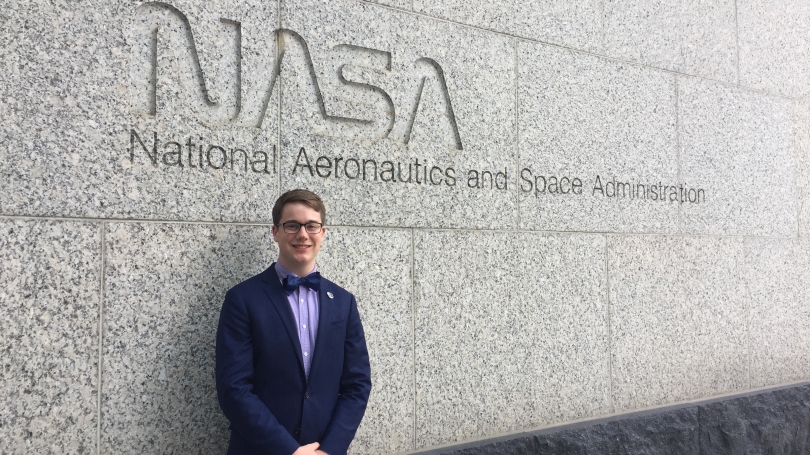
Meet a Scholar: Raphael Hviding '18
In the summer of 2017 I took an internship at the Goddard Space Flight Center, a National Aeronautics and Space Administration center in Greenbelt Maryland. I was working under Dr. Charles Arge, one of the creators of the Wang-Sheeley-Arge (WSA) solar model, used by both the National Oceanic and Atmospheric Administration (NOAA) and the Air Force. The WSA model is the preeminent tool in modeling the solar corona, a layer of the sun’s atmosphere that extends millions of kilometers past the solar surface into interplanetary space, most noticeably visible as a white halo during total solar eclipses. While usually invisible to our eyes, the corona plays a predominant role in the so-called ‘space-weather’ that reaches the Earth and any other targets in the solar system. Ambient solar wind and transient events, such as solar flares or coronal mass ejections, originate from the corona, spurred along by the intense and complicated magnetic field that permeates this layer. If one could fully understand the solar corona, our ability to predict the incidence and severity of space weather at Earth and space missions would be drastically improved.
This is exactly what the WSA model seeks to do. In order to predict the change over time in the corona, we require a complete map of the magnetic field of the sun at any given time. We achieve this quite routinely with space observatories that take solar images with a high cadence. Unfortunately, all current observatories are limited to be near Earth and therefore are unable to image the far side of the sun. Furthermore, the corona changes over the course of hours, while it takes the sun 27 days to rotate completely (in the frame of the Earth). This results in a lack of information and therefore a high level of uncertainty in our space weather predictions. To combat this, WSA makes use of the Air Force Data Assimilative Photosepheric Flux Transport (ADAPT), an ensemble model which uses statistical data about flux emergences on the solar surface in order to ‘make up’ 12 probable far sides of the sun known as realizations. . While none of these may be exactly near the truth of what it looks like, we imagine that one of these must be closer than the rest. However, no one has proved numerically that these realizations actually show sustained improved behavior over the course of time.
My job was to develop a tool in order to characterize whether the ensemble ADAPT model does in fact generate realizations that preform better at predicting solar weather over the course of several weeks. By comparing predictions from all twelve realizations to data taken by the Advanced Composition Explorer (ACE), I was indeed able to show that different realizations do in fact have sustained success in predicting solar weather. This result has important implications for the future of ADAPT and WSA and how they are implemented at NOAA and the Air Force. By being able to point towards a higher performing realization, we can ensure that these organizations and other researchers have the highest accuracy in the coronal model of the sun, which has benefits towards protecting humanity from inclement space weather or pure research benefits in increasing our understanding of the sun and it’s processes.
My time at NASA Goddard was highly educational, having access to phenomenal staff and researchers of the highest caliber, along with bright individuals my age, really spurred me to continue my career in astronomical research. The eclipse looked much better to eyes that understood it!
You can find out more about me at my website.
If you are on campus, come to public observing! It’s a great way to witness the marvels of the cosmos.